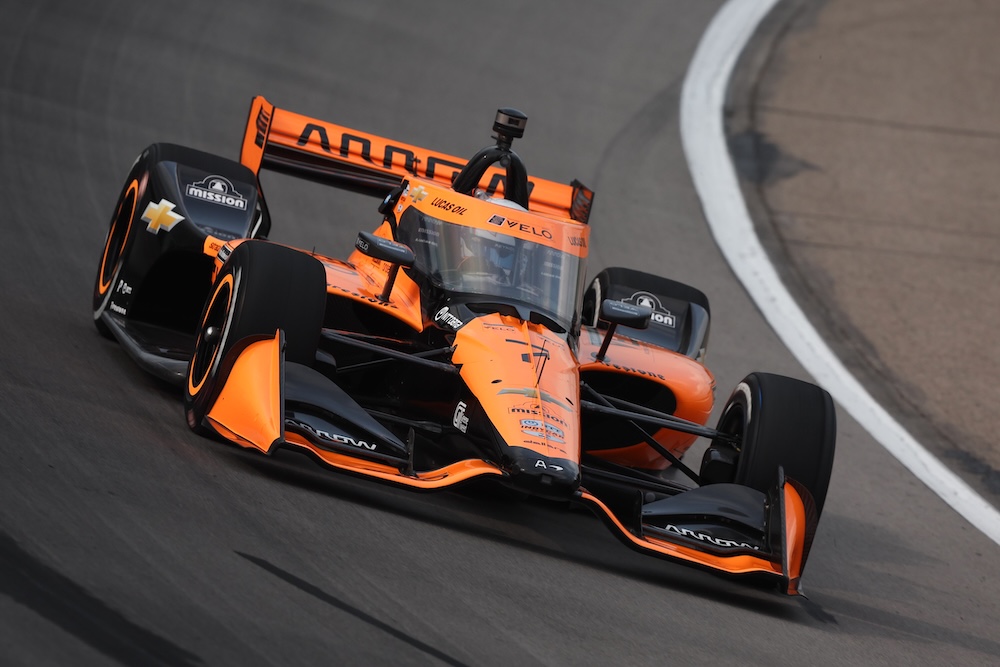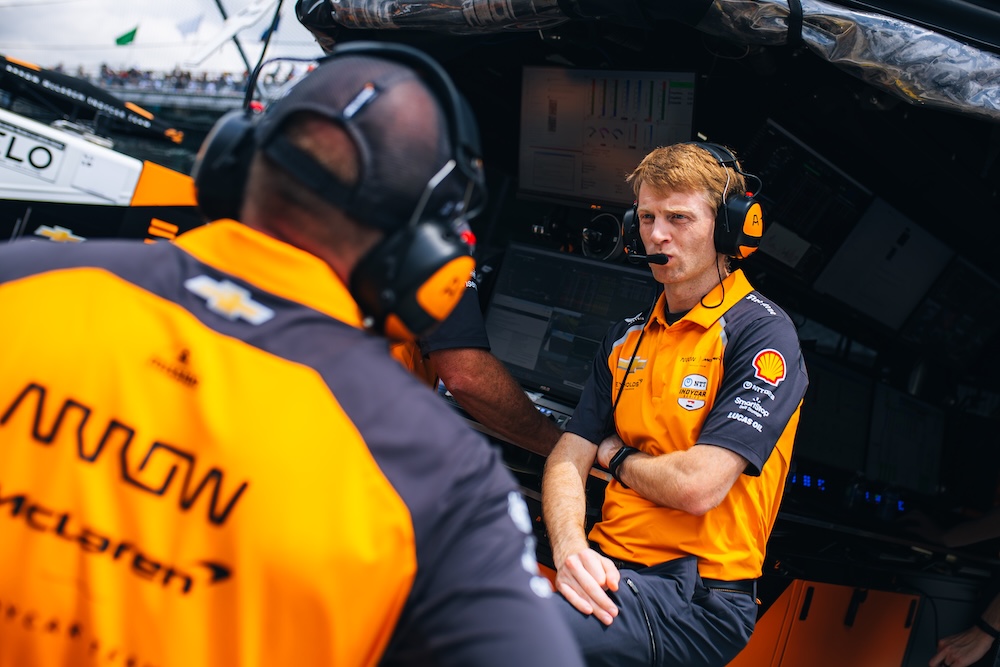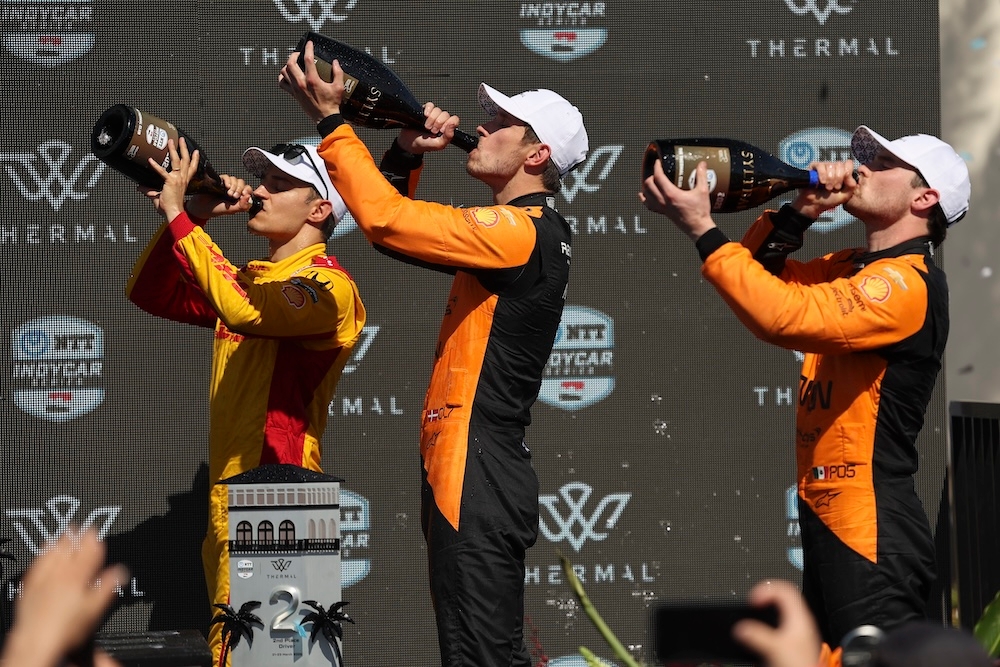Soon after the 2022 NTT IndyCar Series finale at WeatherTech Raceway Laguna Seca, I fell into conversation with a team manager about the season just gone. A little further down the row of haulers, the confetti-covered No. 10 Chip Ganassi Racing-Honda was being loaded up, an hour or so after its occupant Alex Palou had wiped the floor with everyone in perhaps the most dominant performance of the season.
He was the outgoing champion – this Laguna throwdown had been his sole victory of the year and he had lacked the race-to-race consistency seen in his glorious sophomore season – but the majority of us largely put that down to two factors: Team Penske-Chevrolet was slightly better than Ganassi-Honda in ’22, and Palou had distracted himself with the farce surrounding his contractual obligations.
That spring/summer (depends on who you believe), you’ll recall Palou had come to an agreement with Zak Brown, CEO of McLaren, to switch from Ganassi to a papaya-’n’-black car. Chip Ganassi had then pointed out his latest champion had no right to be making such an agreement, but then had forgiven his driver, convinced him to stay on, and left Brown to go whistle. This new display of supremacy by Palou had completed the healing of a briefly fractured relationship.
“I guess days like today are why Chip fought so hard for Palou,” said this rival team manager. “He was incredible. You don’t want talent like that going to one of your rivals, especially not someone you don’t like! [The Brown/Ganassi mutual antipathy is no secret].
“But note this down, OK?… but don’t say it came from me, in case it pisses off my drivers and their people! Palou is not the only golden kid in his 20s available to McLaren. I’d say the next guy who’s going to join Palou, Pato [O’Ward] and [Colton] Herta in that bunch of young IndyCar stars is [Christian] Lundgaard. If I were Zak, I’d be going after him. If Lundgaard figures out ovals, he could be another Palou.”
My prescient companion pulled a wincing face. “Having O’Ward and Lundgaard on the same team – that would be fantastic. Finally that team would be able to justify the money being poured into it and start giving Chip and Roger [Penske] something to worry about on a regular basis, not just grabbing wins here and there.”
Well, 2025 suggests that process has started. Three years ago, it seemed a slightly early call on Lundgaard. Sure, he had been brilliant in the season’s second race on the Indianapolis Motor Speedway road course and had delivered a runner-up finish at the venue where he’d made a startling IndyCar debut one year earlier. And he had just capped the season with a fifth place at Laguna Seca… But those had been his only top five finishes of in ’22 (although he’d fully deserved his Rookie of the Year accolade), and anyway, his team Rahal Letterman Lanigan Racing, has frequently excelled on the IMS road course.
The case for Lundgaard gained pace in his second season, with a first pole at, yes, you guessed it, Indy road course, and pole and first victory at Toronto. But RLL was only going to take him so far, and some would argue Lundgaard’s talent often flattered his equipment for three years. Someone who evidently agreed was Brown, who signed up the young Dane for 2025.
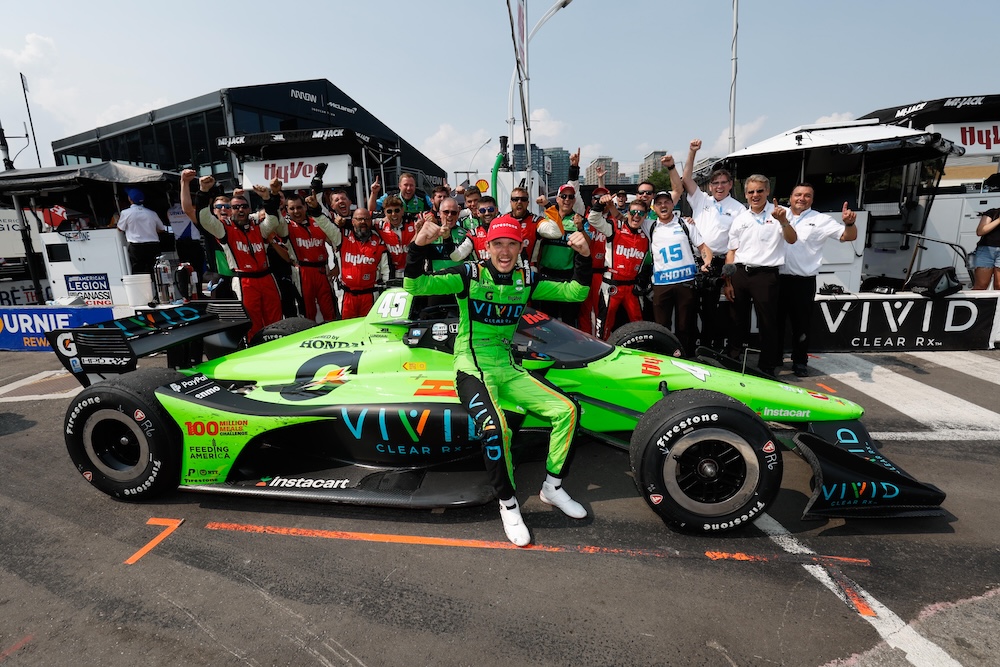
Lundgaard is RLL’s most recent winner courtesy of his Toronto win in 2023. It was those sort of performances that put him on Zak Brown’s radar, and the Dane moved to Arrow McLaren this year. Joe Skibinski/Penske Entertainment
And it appears my unnamed pal’s foresight hasn’t failed him: the combination of O’Ward, Lundgaard and Arrow McLaren-Chevrolet was hugely impressive this season past. O’Ward and Lundgaard finished second and fifth in the championship respectively, accumulated six podiums each, and two of O’Ward’s podiums were victories (Iowa 1 and Toronto). The result was that McLaren deposed Penske as Chevrolet’s top team across a 17-race season, and vaulted Andretti Global to grab P2 behind the Palou/Ganassi leviathan. So were McLaren’s lead drivers the dream combo? Race engineers Will Anderson and Chris Lawrence provide insight.
“It was a good year,” agrees Anderson, who has engineered O’Ward since the Mexican ace arrived in the team in 2020. “We always want more, and would like to be where the No. 10 car was. But yes, we made progress. In previous years, we’d had reliability issues but this year they were largely out of our control – the Nashville tire problem, for one. Performance-wise, I think we made a big step forward in consistency at tracks where we’d previously struggled to put it all together.
“So it was a promising step, but we need to continue making them. We’re trying to be a pain to the Ganassi group and the Penske group. Becoming the best Chevy team was notable because you couldn’t really say that in years past, but we all feel the need to be P1. We went to the championship banquet this year because Pato and Christian were both top-five, and it was cool to be a part of, because I think it made our desire even stronger: we want to be the team that’s celebrating all the wins and the Indy 500.”
Anderson’s point about improving at tracks where McLaren had previously struggled is well made, and the contrast was most stark at Portland International Raceway. In 2024, cars No. 7 (then driven by Alexander Rossi) and No. 5 (O’Ward) qualified 17th and 22nd respectively: in ’25, they would have locked out the front row, had it not been for Lundgaard taking a six-place grid penalty for an early engine change. O’Ward then led until an electrical issue, while Lundgaard finished a feisty runner-up, having held off a charging Palou.
“Yeah, Portland was fun – if we ignore Pato’s issue – and Toronto was another one where we improved a lot and won,” says Anderson. “OK, we probably didn’t have the Andretti cars’ street course pace in Toronto, but we improved a lot year on year, and had the pace whereby, when things went our way, we won. It’s fun to be part of a team that can make those improvements.”
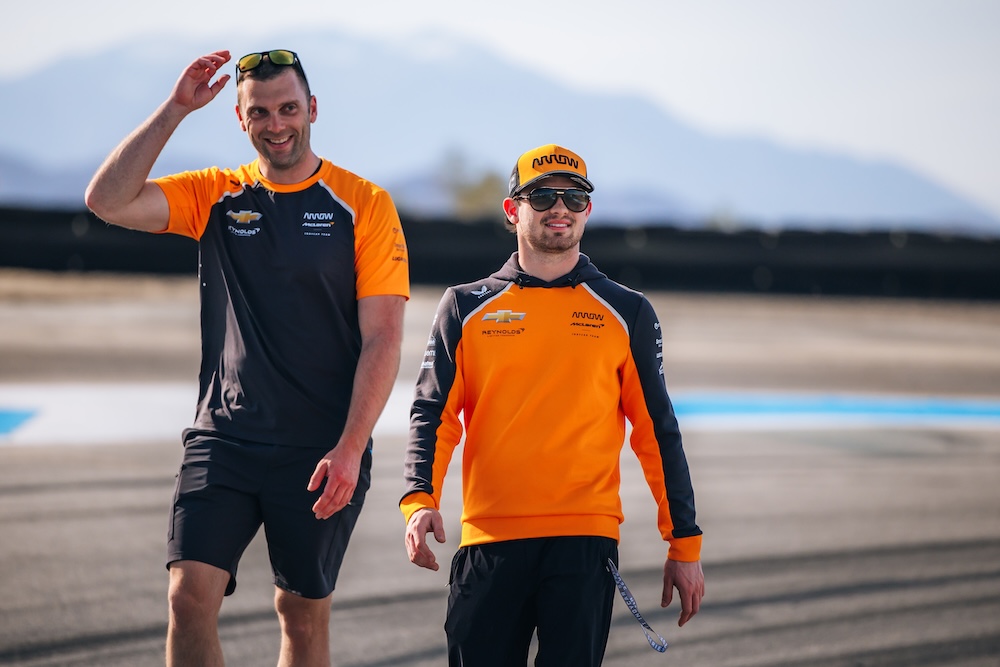
Anderson (pictured with O’Ward) says that improved performances at what had previously been weaker tracks played a big part in Arrow McLaren’s step forward. Photo by Arrow McLaren
After six seasons together, Anderson derives a lot of satisfaction from witnessing firsthand the evolution of O’Ward to become one of the complete elite in IndyCar. He says: “It’s funny to look back and reflect on our first year working together compared with now. Both of us have matured and grown up in different aspects of our jobs. I think you really see it in Pato: he’s grown a lot more mentally strong, particularly in the races. Back then, if we weren’t a P1 car, he would still try to get us to P1 and sometimes mistakes would come with that, whereas this year and last, I’d say he’s taken a more [Scott] Dixon-esque approach, where if we’re only a P7 car, he’ll make sure we get at least that, but maybe try for a little bit better. If we’re not going to win, we’re still going to maximize our points each day. That’s where he’s matured the most… but actually, it’s where we’ve matured as a team, too, over the past five or six years.”
O’Ward has had strong teammates in that time, including someone who became a close friend, Felix Rosenqvist (“FRO”), as well as Rossi and now Lundgaard. Anderson describes his driver’s relationship with Lundgaard as “cool, because they have different upbringings and very different personalities. But they push each other in different ways, and each makes the other better. Pato learns from them all. He and FRO are obviously huge buddies, and he and Rossi also surprisingly became friends in the end. I didn’t see that one coming!
